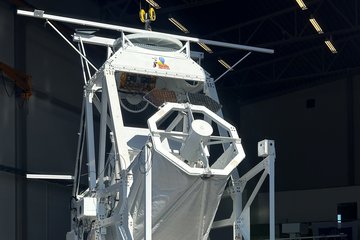All genres
1.
Journal Article
Detection of exomoons in simulated light curves with a regularized convolutional neural network. Astronomy and Astrophysics 640, A41 (2020)
2.
Journal Article
Transit least-squares survey: II. Discovery and validation of 17 new sub- to super-Earth-sized planets in multi-planet systems from K2. Astronomy and Astrophysics 627, A66 (2019)
3.
Journal Article
An alternative interpretation of the exomoon candidate signal in the combined Kepler and Hubble data of Kepler-1625. Astronomy and Astrophysics 624, A95 (2019)
4.
Journal Article
Transit least-squares survey: I. Discovery and validation of an Earth-sized planet in the four-planet system K2-32 near the 1:2:5:7 resonance. Astronomy and Astrophysics 625, A31 (2019)
5.
Journal Article
Sectoral r modes and periodic radial velocity variations of Sun-like stars. Astronomy and Astrophysics 623, A50 (2019)
6.
Journal Article
Revisiting the exomoon candidate signal around Kepler 1625 b. Astronomy and Astrophysics 617, A49 (2018)
7.
Journal Article
Magnetic fields during galaxy mergers. Astronomy and Astrophysics 593, A89 (2016)











